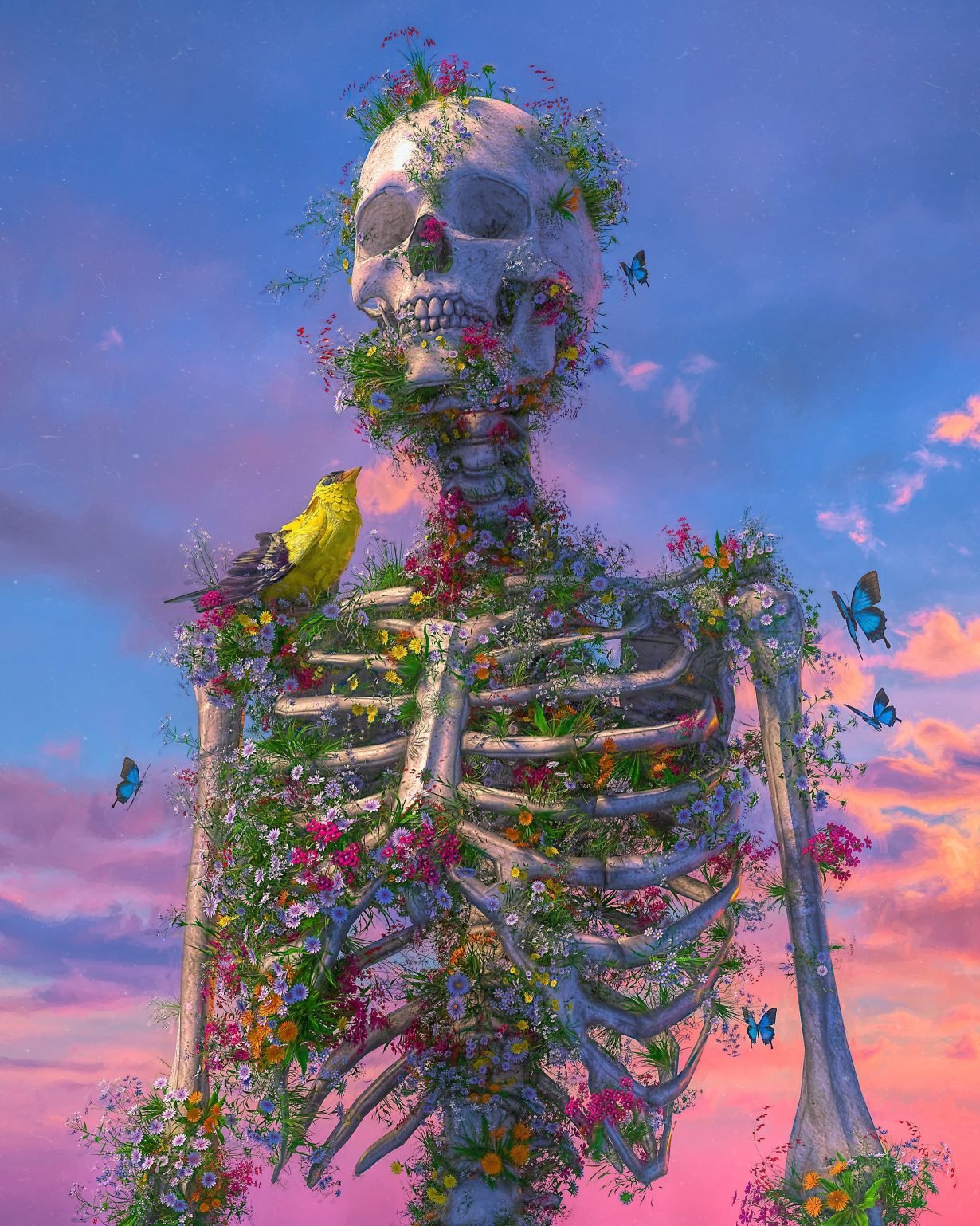NFTs caused upheaval to the art market in 2021. But artists are responding - by prototyping the democratic net we want
Beeple, ‘ALIVE’, 2021
One of the oddest digital phenomena of 2021, now we’re at year end, was certainly the creation of digital art objects called NFT’s (non-fungible tokens). These connected the practice of artists to the trading spaces of crypto-currency. You bought a digital artefact - an image or video - but it was tightly certified by a digital contract as an original (that is, not copyable like any other digital object).
Many millions have been spent on these NFT’d artworks in 2021. They have challenged many assumptions pertaining in the existing art (and indeed financial) markets.
We’ve found a piece that really explains the wider context of this, from Tina Rivers Ryan in Art Review. It opens with a useful overview of the gallery fever around making and selling NFTs, and the pushback on this from existing digital artists. Ryan goes on:
I personally have spent most of this year feeling like someone who wished on the monkey’s paw: I always wanted digital artists to prosper and digital art to make headlines, but not like this.
Our multi-faceted debate was framed as merely a power struggle over the ability to control and profit from art’s value. The NFT boosters mobilised the rhetoric of decentralisation to cast themselves as populist radicals tearing down the gates erected by artworld elites.
However they also celebrated institutional validation and set about erecting gates of their own as they replicated some of the artworld’s worst offenses, from invite-only platforms to a market dominated by white cishet male artists.
On a more fundamental level, however, the Great NFT War of 2021 was really about differing visions of technological utopia and dystopia. In the early 1990s the science-fiction author William Gibson memorably observed that ‘the future is already here – it’s just not evenly distributed’.
Typically, new technologies are introduced as luxuries, allowing the privileged to enjoy the future in the present. In 2021, billionaires triumphantly rocketed into space while the rest of us continued to muddle through life on a plague-stricken planet.
But as Virginia Eubanks points out in her book Automating Inequality: How High-Tech Tools Profile, Police, and Punish the Poor (2018), when it comes to dystopian technologies like biometric surveillance, the opposite is true: the most disenfranchised, vulnerable communities beta-test them before they’re ‘scaled’ for wider use.
Artists have always helped innovate new technologies, but this is the first time a larger artworld has joined them, suggesting a question that has far larger stakes than whether cryptoart will be canonized and/or collapse under a bear market.
Are the proponents of NFTs visionary pioneers of our blockchain-based future, finally realising the avant-garde’s dream of melding art and technology to foment a social revolution?
Or are they marks, promoting a dangerous tool that threatens to ‘disrupt’ not only the art market, but all markets (and perhaps the environment and democratic governments as well) for the benefit of a small group of investors?
The answer to this question has literally become a matter of faith, in the sense that it reflects one’s relative faith or distrust in technology. But thoughtful voices from the digital art community – which tends to see NFTs as more than just a gamified investment opportunity or a joke – are reframing the question.
They’re modelling how to work through technology’s contradictions and shape its values with intention, moving slowly and building things instead of moving fast and breaking things.
These include Casey Reas, who launched Feral File, an NFT platform that privileges curating, in March; Kelani Nichole, founder of Transfer gallery, whose online show with left.gallery, ‘Pieces of Me’, rejected individualism for communalism in April; and Regina Harsanyi, who is developing NFT-collection-care protocols that reflect artworld conservation standards.
Many artists are part of this third space, too, using NFTs to advance more philosophical conversations about blockchain technologies and the ideas they represent. Rhea Myers and Mitchell Chan have examined the NFT contract as a medium; LaTurbo Avedon and Harm van den Dorpel have explored the poetry of generative and networked protocols; and Cassils and Dread Scott have critiqued how tokens exacerbate the commodification of identity, to cite only a few examples.
These stakeholders are forging yet another alternative artworld that values artists’ incomes and aesthetics, communities and institutions, transparency and stewardship, accessibility and expertise.
This path also leads to a ‘Web 3.0’ that looks less like an anarcho-capitalist marketplace or panoptic metaverse and more like the democratic, equitable society that many of us were working towards, however incrementally, before NFTs came along.
It’s an idea that is now being tested by ‘Distributed Autonomous Organizations’, or DAOs, which theoretically use blockchain-based programs to automate governance and expand access to decision-making.
But in theory and in practice, technologies are not neutral, code is not law, and decentralisation is not inherently democratic. Meaning that it doesn’t automatically deliver mechanisms to carefully negotiate conflict and build consensus while protecting minority voices.
Crypto promises a world in which all transactions are tracked and incentivised, ostensibly for our benefit; if that promise turns out to be a threat, then much more than power over the art market or art history is now at stake. More than ever, we will need an artworld that doesn’t reject technology but does question technocultural values – and can play a long game.
As Walter De Maria once said, ‘Both art and life are a matter of life and death’.

